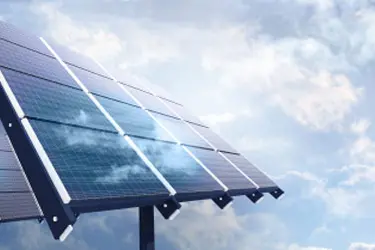PHOTO
An agreement for a new solar plant marks the latest step in Algeria's effort to increase renewable electricity generation and reduce domestic gas consumption.
The move is a crucial one, given that the country’s rising demand for power – much of which is generated from gas feedstock – has constrained the volume of gas available for export, impacting state revenues.
According to data from the Ministry of Energy, electricity consumption increased by 7.4% to 68.8 TWh last year.
New solar plant
In late September Algerian authorities announced that state-run energy firm Sonatrach and Italian energy giant Eni had inked an agreement for the construction of a 10-MW solar photovoltaic plant in Ouargla in the Sahara Desert.
Construction of the facility, which will be located in Eni’s Bir Rebaa North (BRN) field, is scheduled to begin by the end of the year.
Once completed, the plant will supply the BRN field with electricity, freeing up gas previously used for feedstock for export.
Power of the sun
The move is the latest in a bigger push by the government to expand renewables, with much of the focus on solar. Around 85% of Algeria’s landmass is located in the Sahara Desert, and the country’s solar radiation potential is among the highest in the world, at an estimated 13.9 TWh per year.
In the first nine months of 2016 approximately 300 MW of solar plants came on-line, Noureddine Boutarfa, minister of energy, told local press. This is in addition to the 268 MW of solar capacity installed last year, with 14 new plants worth a combined AD70bn (€578.2m) constructed in the Haut Plateaux and in the south of the country by a subsidiary of state-owned utility Sonelgaz, Shariket Kahraba wa Taket Moutadjadida.
Last year Sonelgaz announced plans to double the country’s generation capacity and source more than a quarter of its energy needs from renewables by 2030, largely through the installation of an additional 13.5 GW of solar capacity.
It is hoped that much of the increased capacity will come from private sector projects. To encourage development of solar facilities, last year government authorities introduced a series of incentives for companies investing in renewables, including a guarantee that Sonelgaz and its subsidies would buy the energy produced under a 20-year power purchase agreement. Feed-in tariffs were also introduced to reduce risk for private investors through guaranteed fixed payments.
Towards renewables
Under the country’s Renewable Energy and Energy Efficiency Development Plan (REEEDP), introduced in 2011 and amended in 2015 to further raise targets, Algeria is set to install 25 GW of renewable generation capacity by 2030, with the first 4.5 GW expected by 2020.
In addition to satisfying local demand, boosting alternative sources of energy should also allow Algeria to increase exports to markets in Africa and Europe.
Indeed, exports of both renewable and conventional energy are expected to receive a boost under the REEEDP. Of the 25-GW total, 10 GW will be allocated for export, mainly to Europe, with another 300bn cu metres of natural gas per year to be preserved for export by 2030.
On the demand side, efforts are also under way to curb local consumption. A parallel plan, the National Programme for the Development of Energy Efficiency, calls for a 9% decrease in energy use by 2030 via efficiency measures, which include housing insulation and the conversion of vehicles to liquefied petroleum gas and compressed natural gas.
A new reality
Algeria’s economy has traditionally centred on hydrocarbons, with oil and gas accounting for around 30% of GDP and 95% of export revenues. Like many oil- and gas-producing countries, however, low energy prices have significantly impacted the Algerian economy.
At the end of last year, Algeria’s hydrocarbons exports fell by nearly half compared to 2014. Lower energy receipts had a trickle-down effect on public finances, contributing to a 19% year-on-year decline of the country’s foreign reserves to $143bn, as well as nearly doubling the fiscal deficit to 16% of GDP over the same period.
Despite falling revenues, however, foreign direct investment in the energy sector reached $2.3bn, an increase of 45% compared to the previous year, suggesting prospects for continued exploration and production in the years ahead.
© Oxford Business Group 2016












